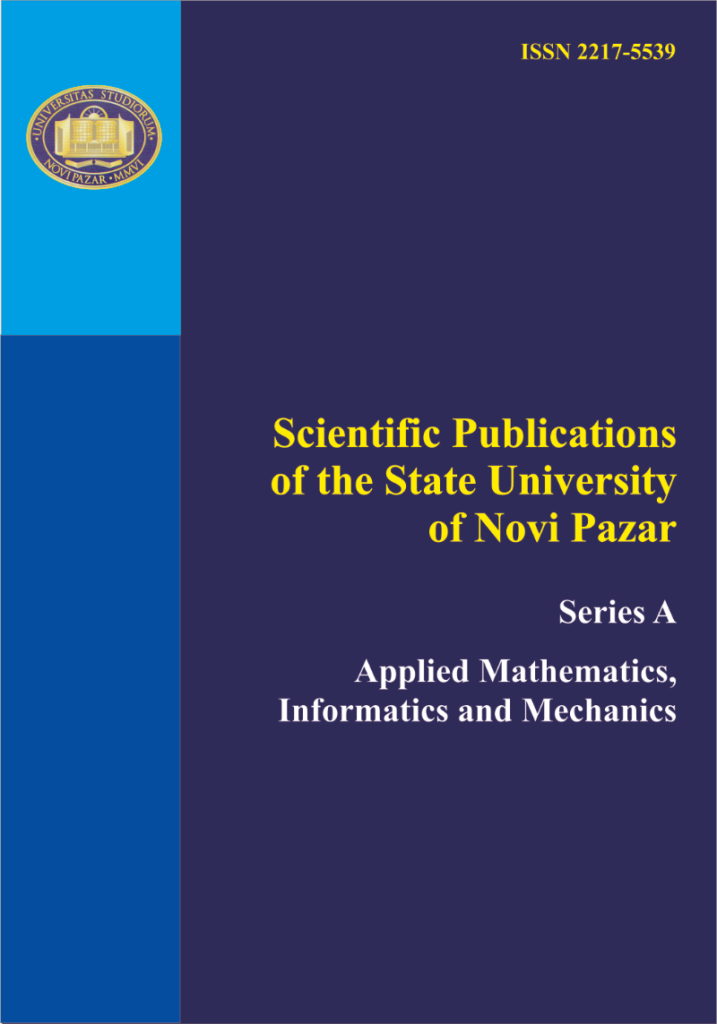
Mechanisms of Electrical Berakdown in Low Vacuums
Authors: D. Ilić, D. Mostić, E. Dolićanin, K. Stanković, P. Osmokrović
Keywords: initial mechanisms, vacuum breakdown, vacuum avalanchemechanism, statistical analysis.
Abstract:
Justification of the hypothesis about the avalanchemechanismof vacuumbreakdown is examined. For that purpose, values of dc and impulse breakdown voltage have beenmeasured under well defined laboratory conditions, in the pressure range from 10-6 mbar to 1 bar, and for inter-electrode distances from0.1 mm to 1 mm. Variable parameters of the experiment included the type of the residual gas and the material of the electrodes in the system used for forming a homogeneous electric field. Statistical analysis of experimental results and their comparison to the predictions of a theoretical model, attest that the avalanche mechanism of breakdown does come about in low vacuums.
References:
[1] J.MMeek, J.D. Craggs, Electrical Breakdown ofGases, JohnWiley & Sons, New York,1978.
[2] C.S Brown, Introduction to Electrical Discharges in Gases, Wiley, New York, 1965.
[3] Little, R.P.; Whitney,W.T. J. App. Phys. 1963, 34, 2430-2434.
[4] Jttner, B. Vacuum arc initiation and applications pp. 516-519 in Latham, R.V. High Voltage
Vacuum Insulation: Basic Concepts and Technological Practice, Academic Press, London,
1995.
[5] Djogo, G.; Cross, J.D.,Dependence of Gap Voltage Collapse During Vacuum Breakdown on
Geometry and Plasma Dynamics , IEEE Trans. Dielect. El. In. 1997, 4, 848-853.
[6] Djogo, G.; Cross, J.D. Circuit Modeling of a Vacuum Gap During Breakdown, IEEE Trans.
Plasma Sci. 1997, 25, 617-624.
[7] Osmokrović P., Influence of Switching Operations on the Vacuum Dielectric Strength, IEEE
Trans. on Power Delivery, 1993, 8, 175-181.
[8] Osmokrović, P.; Vujisić, M.; Cvetić, J.; Pešić, M., Stohastic nature of electrical breakdown
in vacuum, IEEE Trans. Dielect. El. In. 2007, 14, 803-812.
[9] Osmokrović, P.; Djogo, G. Vacuum 1990, 40, 228.
[10] Mesyatt, G.A. Cathode Phenomena in a Vacuum Discharge: the Breakdown, the Spark and
the Arc, Nauka, Moscow, 2000.
[11] Fursey, G.N., Field emission and vacuum break- down, IEEE Trans. Dielect. El. In. 1985
EI-20, 659-670.
[12] Vujisić, M., Stanković, K., Vasić, A., Comparison of gamma ray effects on eproms and
eeproms, Nucl. Technol. Radiat. Prot. 2009, 24, 61-67.
[13] Vujisić, M., Stanković, K., Dolićanin, E., Jovanović, B., Radiation Effects in Polycarbonate
Capacitors, Nucl. Technol. Radiat. Prot. 2009, 24, 209-211
[14] Tsuruta, K. Prebreakdown Field Emission Current and Breakdown Mechanism of a Small
Vacuum Gap, IEEE Trans. Dielect. El. In. 1983 18, 204-208.
[15] Latham, R.V. HV, Vacuum Insulation -The Physical Basis, Academic Press, London, 1981.
[16] Slade. P.G., The Vacuum Interrupter: Theory, Design and Application, CRC Press, 2008.
[17] Olendzkaya, N.F., Vacuum Breakdown with Transfer of Conducting Particles between Electrodes,
Radio Eng. & Electron. Phys. 1963, 8, 423.
[18] Davies, D.K., Biondi,M.A., Mechanism of DC electrical breakdown between extended electrodes
in vacuum, J. Appl. Phys. 1971, 42, 3089-3107.
[19] Davies, D.K., Biondi, M.A., Emission of Electrode Vapor Resonance Radiation at the Onset
of DC Breakdown in Vacuum, J. Appl. Phys. 1977, 48, 4229-4233.
[20] Yen, Y.T., Tuma, D.T., Davies, D.K., Emission of electrode vapor resonance radiation at the
onset of impulsive breakdown in vacuum, J. Appl. Phys. 1984, 55, 3301-3307.
[21] Lafferty J.M. (Ed.).Vacuum arcs – theory and application,Wiley, New York, 1980.
[22] Rozanova, N.B.; Granovski, V.L. Sov. Phys. Tech. Phys.1956, 1, 471.
[23] Bouchard, K.G., Vacuum Breakdown Voltages of Dispersion-Strengthened Copper vs
Oxygen-Free, High-Conductivity Copper, J. Vac. Sci. Technol., 1970, 7, 358.
[24] Stankovi´c, K.; Vujisi´c, M.; Doli´canin, E. Reliability of semiconductor and gas-filled diodes
for over-voltage protection exposed to ionizing radiation, Nucl. Technol. Radiat. Prot. 2009,
24, 132-137.
[25] Stankovi´c, K.; Vujisi´c, M., Influence of radiation energy and angle of incidence on the uncertainty
in measurements by GM counter , Nucl. Technol. Radiat. Prot. 2008, 23, 41-42.
[26] Rice, J.A. Mathematical Statistics and Data Analysis, Second Edition, Duxbury Press, Belmont,
California, 1995.
[27] Montgomery, D.C.; Runger, G.C. Applied Statistics And Probability for Engineers, John
Wiley & Sons Inc, New York, 2006.
[28] Ye, K., Myers, R.H., Walpole, R.E., Myers, S.L., Probability & Statistics for Engineers &
Scientists, Prentice Hall, 2006.
[29] Osmokrovi´c, P., Krivokapi´c, I., Krsti´c, S., Mechanism of Electrical Breakdown Left of the
Paschen’s Minimum, IEEE Trans. Dielect. El. In. 1994, 1, 77-82.
[30] Osmokrovi´c, P., ivi´c, T., Lonˇcar, B., Vasi´c, A., The validity of the similarity law for the
electrical breakdown of SF6 gas, Plasma Sources Sci. T. 2006, 15, 703-713.
[31] Osmokrovi´c, P., Arsi´c, N., Lazarevi´c, Z., Kartalovi´c, N., Triggered Vacuum and Gas Spark
Gaps, IEEE Trans. on Power Delivery 1996, 11, 858-865.
[32] Osmokrovi´c, P., Kartalovi´c, N., Atanackov, N., Ostoji´c, D., Model Law for Gas Isolated
Systems, IEEE Trans. Plasma Sci. 2000, 28, 298-302.
[33] Townsend, J.C., Theory of Glow Discharge from Wires, The Electrician, 1913, 348-350.
[34] Osmokrovi´c, P., Vasi´c, A., ivi´c, The Influence of the Electric Field Shape on the Gas Breakdown
under Low Pressure and Small Inter-Electrode Gap Conditions, T. IEEE Trans. Plasma
Sci. 2005, 33, 1677-1681.
[35] Osmokrovi´c, P., Vujisi´c, M., Stankovi´c, K., Vasi´c, A., Lonˇcar, B., Mechanism of electrical
breakdown of gases for pressure for 10 to 1 bar and inter-electrode gaps from 0,1 to 0,5 mm,
Plasma Sources Sci. T. 2007, 16, 643-655.
[36] Osmokrovi´c, P., Electrical Breakdown of SF6 at Small Values of Product pd, IEEE Trans. on
Power Delivery 1989, 4, 2095 – 2100.
[37] Osmokrovi´c, P., Vasi´c, A., , IEEE Trans. Plasma Sci. 2005, 33, 1672-1676.
[38] Osmokrovi´c, P., Mechanism of Electrical Breakdown of Gases at Very Low Pressure and
Inter-electrode Gap Values, IEEE Trans. Plasma Sci. 1993, 21, 645-654.
[39] Farral, G.A., Vacuum Arcs-Theory and Applications, (J. M. Laferty ed.), Section ”Electrode
Conditioning”, pp. 51-56,Wiley, New York, 1980.
[40] Hauschild W., Mosch, W., Statistical Techiques for High-Voltage Engineering, IEE Power
Series 13, Peter Peregrinus, London, 1992.